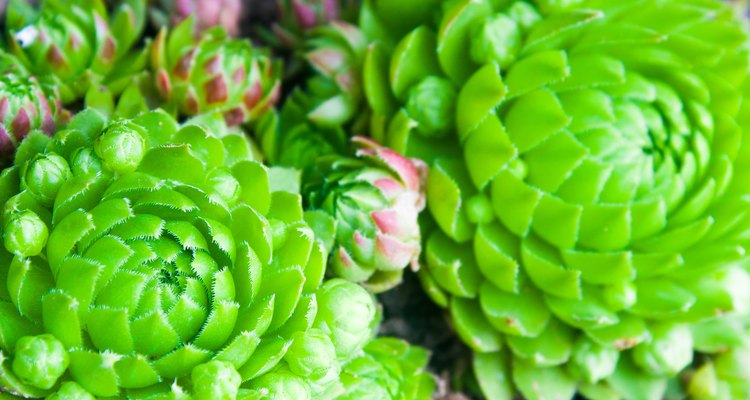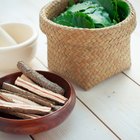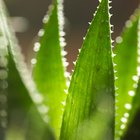
Belyona/iStock/Getty Images
Plants have been used for healing wounds since ancient times--for instance, Alexander the Great supplied his soldiers with aloe vera following a battle. Healing plants work in several different ways: Some have anti-inflammatory properties, and some are antiseptic, keeping germs from infecting wounds. Others are astringent and help tissue contract, which controls bleeding.
Aloe Vera
Aloe vera is used in two main ways: taken orally as a laxative and applied topically to heal wounds, burns and skin conditions. According to the British resource center Plants for a Future, aloe helps heal wounds by providing a protective coating, stimulating the healing rate and reducing the chance of infection. To treat a wound, use the transparent gel from aloe leaves; you can apply it directly by cutting into a leaf or use an ointment that contains the gel.
Houseleek
Houseleek is a relative of aloe that's also used for healing wounds. The gel in the leaves of the houseleek plant soothes the skin and contains astringent qualities. The gel is obtained and used in the same way as aloe gel, but the commercial use of houseleek is much more rare than commercial use of aloe. Houseleek is also called "hens and chicks" because of the way it grows; the mother rosette (the hen) produces small new rosettes (the chicks), which are attached by substantial stems.
Yarrow
Yarrow grows wild in venues ranging from city lots to country meadows, and it's used to treat a variety of conditions from common colds to kidney problems. Its major use is in healing wounds--it's a natural bandage that acts as an antiseptic and helps stop bleeding. You can apply yarrow to a wound in the form of fresh leaves, powder, juice or ointment. Watch for a possible allergic reaction, though--it often shows up as a rash on the skin.
St. John's Wort
St. John's wort is often imbibed to treat conditions ranging from depression to menstrual cramps, but it's also used externally to heal burns and wounds. Health writer Michael Castleman reports the antibiotic and anti-inflammatory compounds in St. John's wort work to prevent infection and increase the healing process. Plants for a Future says the flowers can be infused in olive oil or made into an tincture that's applied to a wound.
Related Articles

What Is Aloe Good For?

What Are the Benefits of Aloe Vera & ...

Chamomile & Aloe Skin Care

Aloe Ferox Benefits

How to Treat Hematoma & Swelling After ...

Natural Ways to Get Rid of Scabies

Arnica for Acne

Neem Bark Benefits

Bromelain & Bruising

Burdock Root for Acne

How to Use Bleach on Poison Oak

Basil for Hair Growth

Does Aloe Vera Juice Treat Skin Cancer?

Molluscum Contagiosum Natural Treatments

What Relation Is My Grandchild to My ...

Chasteberry for Acne

What Is Camphor Phenol?

How to Remove Scars Caused by Insect ...

Aloe Vera & Seborrheic Dermatitis

Can Herbs Flush Cellulite?
References
Resources
Writer Bio
Barbara Dunlap is a freelance writer in Oregon. She was a garden editor at "The San Francisco Chronicle" and she currently specializes in travel and active lifestyle topics like golf and fitness. She received a master's degree from the University of Missouri-Columbia and has been a Knight Foundation Fellow.
Photo Credits
Belyona/iStock/Getty Images